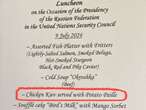In recent years, scarcity has become a common phenomenon. The pandemic had people in a panic over getting everything from toilet paper to patio heaters, causing some to pay exorbitant prices or tolerate long waiting periods for mundane items.
“Scarcity mindset becomes activated when we look at what we have, we compare it to something better, and we feel like we don’t have enough,” says Kelly Goldsmith, a marketing professor at Vanderbilt University who has researched the scarcity mindset in various capacities.
Whether you’re looking at your retirement account balance or the potential budget for your department next year in an environment of cutbacks, a scarcity mindset may be triggered if you feel like you won’t have enough for your needs. And that can have consequences in the workplace, Goldsmith says.
The impact of a scarcity mindset
While a scarcity mindset serves a biological purpose in helping to ensure people have what they need to survive, that craving for more can undermine what’s best for individuals and teams and even hold you back in your career.
“The difference today is that this sort of ancient hardware we have—it hasn’t changed, but our environments and lives have,” says science journalist Michael Easter, author of Scarcity Brain: Fix Your Craving Mindset and Rewire Your Habits to Thrive with Enough. “We don’t necessarily have an upper limit governor on that.”
In fact, researchers have found a number of factors that are affected by scarcity-driven beliefs. Research published by the National Academy of Sciences found that a scarcity mindset has a “profound” effect on decision-making among consumers, especially after periods where they experienced abundance. Other studies found that a scarcity mindset decreases executive functioning and reduces empathy toward others’ pain.
When those effects play out in the workplace, the results can range from resource hoarding and siloed information to overwhelm and burnout among people who are trying to routinely do more. “The productivity industry is this giant industry that’s all predicated on the idea that, ‘Hey, you’re not doing enough. You need to do more faster,’” he says.
With the changes that have transformed many knowledge worker roles over the past two decades, and especially since the pandemic, the result for workers may be a race to do more, leading to burnout, decreased effectiveness, and other negative outcomes.
Recognizing—and managing—scarcity
Being mindful of both the individual and organizational impact of that “not enough” feeling is an important step toward mitigating its impact, Goldsmith says. “When you have a scarcity mindset activated, are you looking to protect your own or are you actually looking to give to others—knowing that, from an evolutionary psychology standpoint, both strategies are viable ways to stay afloat,” she says.
In other words, will you protect what you want for yourself or lean into the strength of working together? “When we feel like we don’t have enough, it’s a great time to work with others, so that we can establish this kind of collective and be stronger through our collective effort,” she adds.
Easter says that humans tend to try to solve problems by “adding more”—more resources, bigger budgets, etc. But that leaves important solutions out of the equation. A study published in Nature this year found that, depending on age, culture, and task, people may tend to overlook solutions that are based in subtraction—simplifying or streamlining—in favor of addition-based solutions.
Understanding such a bias is important, says Easter. “The better solution, a more efficient solution, is often subtraction, but we don’t even think about that,” he says. A good place to start on an individual level is “the bigger why,” he adds. When you focus on your personal priorities, you can get a better sense of what you truly need—enough money for your family to be comfortable, for example—and realizing what that means to you instead of constantly striving and working more for some ambiguous, never-realized goal.
Realizing scarcity mindset’s value
While scarcity mindset has its risks, recognizing it can help uncover those better solutions and even realize some of its advantages. First, when we use scarcity mindset to explore our real needs, we may be more purposeful about how we spend time and other resources, and less likely to waste them on distractions, which we may ultimately regret, Easter says.
He points to a concept called the “scarcity loop.” Slot machines are a good example of the three-part loop, which offers opportunity, unpredictable rewards, and quick repeatability. “You know you’ll get that thing of value eventually if you keep doing the behavior, but you don’t know when, and you don’t know how good it’s going to be. And then quick repeatability, you can immediately repeat that cycle,” he says. That’s a good way to spend time, money, and focus on something that doesn’t matter to you.
Goldsmith says that scarcity can also inspire creativity and resourcefulness. People who feel comfortable and awash in resources, “don’t really push themselves to think critically about new ways to think outside the box and challenge themselves to really make the best of what they have,” she says. “When you have restricted input, it gets a different way of thinking that actually can lead to these more innovative, creative outcomes.”
While no one likes to feel like they’ll miss out or not have enough, a scarcity mindset may also be a prompt, contributing better prioritization and greater creativity.








No comments